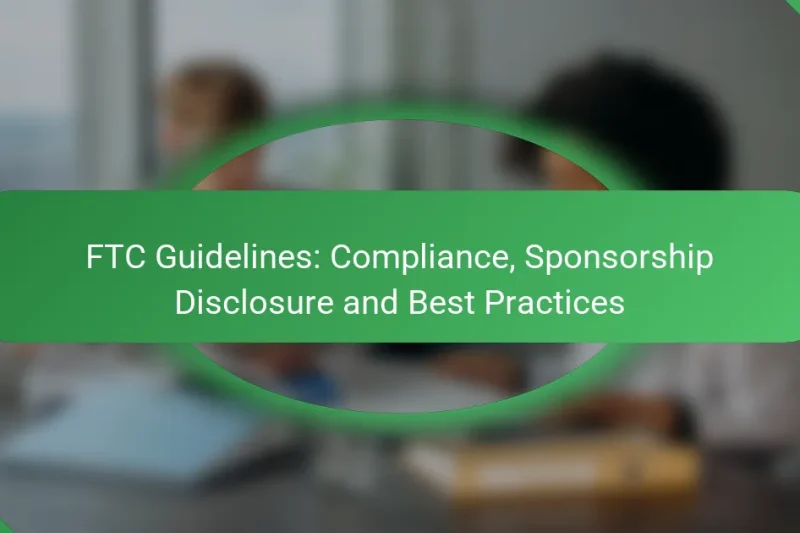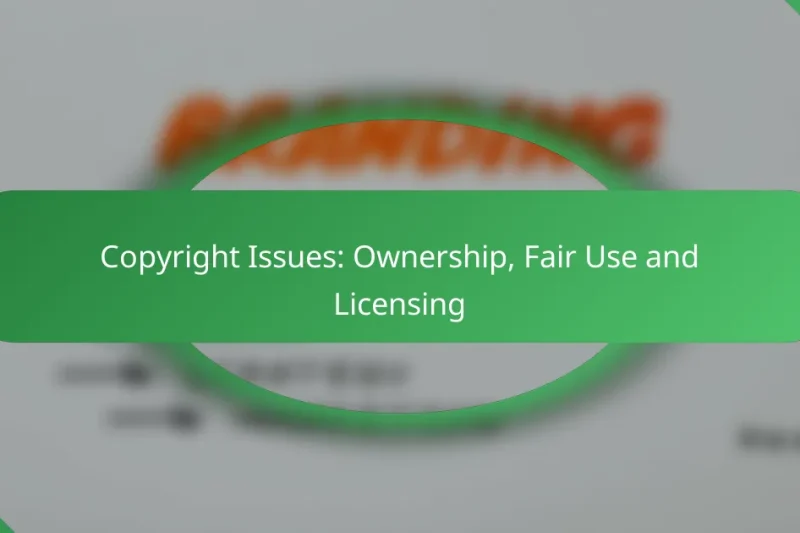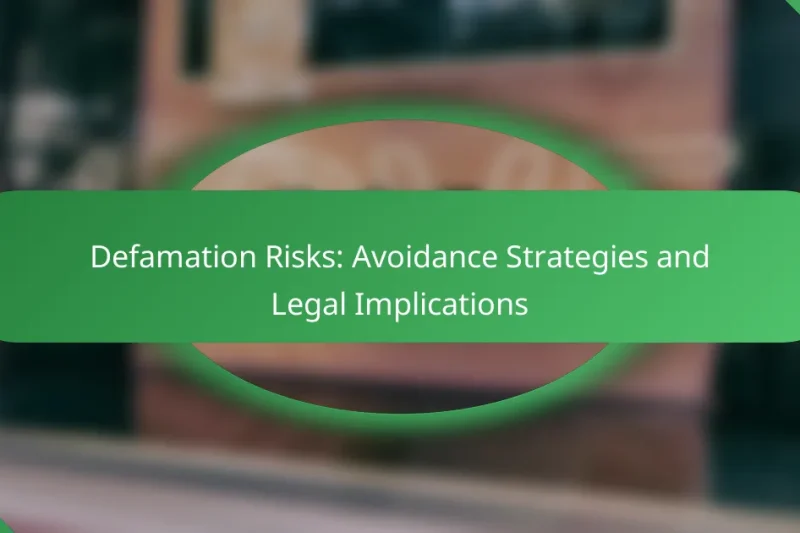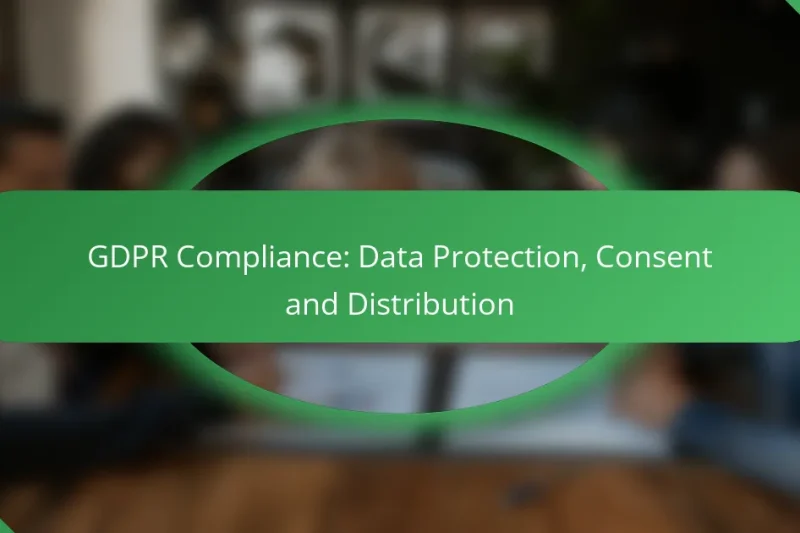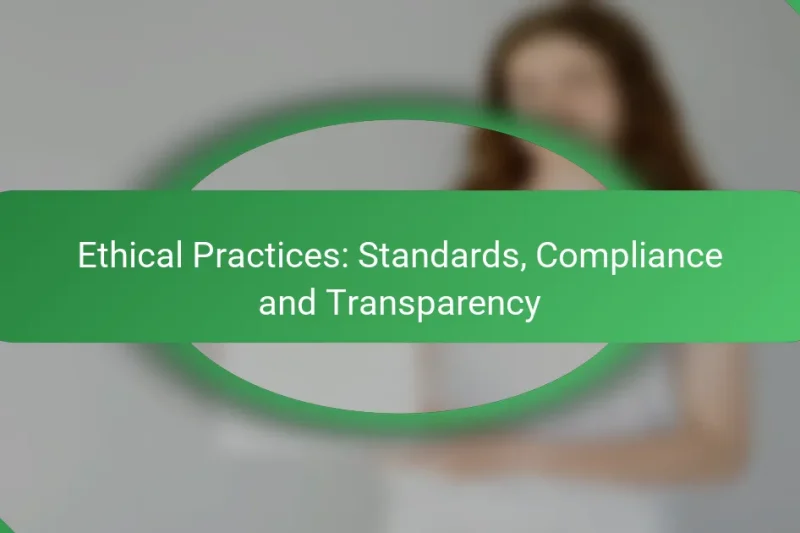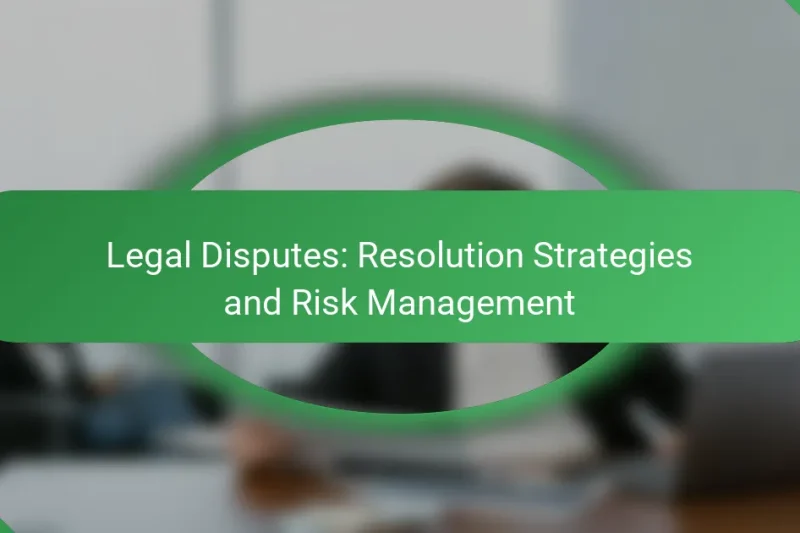Transparency in corporate governance is essential for fostering trust and accountability among stakeholders. In the UK, … Transparency: Disclosure Requirements and Ethical StandardsRead more
Press Release Services: Legal Considerations
Press release services in the UK are subject to a range of legal considerations that are crucial for compliance and protection of both issuers and service providers. Key areas of focus include advertising standards, intellectual property rights, defamation laws, and data protection regulations, all of which play a vital role in the creation and distribution of press releases.
FTC Guidelines: Compliance, Sponsorship Disclosure and Best Practices
The FTC guidelines emphasize the importance of transparency in advertising and sponsorships, mandating that influencers and … FTC Guidelines: Compliance, Sponsorship Disclosure and Best PracticesRead more
Copyright Issues: Ownership, Fair Use and Licensing
Copyright issues encompass the complexities of ownership, fair use, and licensing of creative works. In the … Copyright Issues: Ownership, Fair Use and LicensingRead more
Defamation Risks: Avoidance Strategies and Legal Implications
Defamation risks in the UK arise from making false statements that can harm an individual’s or … Defamation Risks: Avoidance Strategies and Legal ImplicationsRead more
GDPR Compliance: Data Protection, Consent and Distribution
GDPR compliance is essential for organizations operating in the UK, as it mandates strict measures for … GDPR Compliance: Data Protection, Consent and DistributionRead more
Ethical Practices: Standards, Compliance and Transparency
Ethical practices in business are essential for fostering a culture of fairness, transparency, and accountability. By … Ethical Practices: Standards, Compliance and TransparencyRead more
Legal Disputes: Resolution Strategies and Risk Management
Legal disputes can arise in various contexts, necessitating effective resolution strategies such as mediation, arbitration, and … Legal Disputes: Resolution Strategies and Risk ManagementRead more
What are the legal considerations for press release services in the UK?
Press release services in the UK must navigate various legal considerations to ensure compliance and protect both the issuer and the service provider. Key areas include advertising standards, intellectual property rights, defamation laws, and data protection regulations.
Compliance with UK advertising standards
Press releases must adhere to the UK Code of Non-broadcast Advertising and Direct & Promotional Marketing (CAP Code). This includes ensuring that claims made are truthful, not misleading, and substantiated. For example, if a press release claims a product is the “best” in its category, it should be backed by evidence.
Additionally, any promotional material must clearly distinguish between advertising and editorial content. This is crucial to maintain transparency and avoid misleading the audience.
Intellectual property rights
When creating a press release, it is essential to respect intellectual property rights, including copyright and trademark laws. This means ensuring that any images, logos, or content used are either owned or properly licensed. For instance, using a company logo without permission could lead to legal disputes.
It is advisable to include copyright notices and seek permission for any third-party content to avoid infringement issues. Always credit sources appropriately to maintain ethical standards.
Defamation laws
Defamation laws in the UK are strict, and a press release must not contain false statements that could harm an individual’s or organization’s reputation. Statements should be factual and verifiable to mitigate the risk of defamation claims. For example, making unsubstantiated claims about a competitor can lead to legal action.
To protect against defamation, consider including disclaimers or ensuring that all statements are backed by credible sources. Consulting legal counsel before publishing sensitive content is advisable.
Data protection regulations
Under the UK General Data Protection Regulation (GDPR), any personal data included in a press release must be handled with care. This includes obtaining consent from individuals before using their personal information. For instance, if a press release mentions customer testimonials, ensure that the customers have agreed to their names and details being published.
Organizations should implement data protection policies to safeguard personal information and avoid potential fines. Regular training on data handling practices can help ensure compliance with GDPR requirements.
How to choose a press release service provider?
Choosing a press release service provider involves evaluating their reputation, pricing, and distribution networks. These factors will help ensure that your press release reaches the right audience effectively and efficiently.
Reputation and experience
When selecting a press release service, consider their reputation and experience in the industry. Look for providers with a strong track record of successful campaigns and positive client testimonials. Research their history and any notable clients they have worked with to gauge their credibility.
Additionally, check for any industry awards or recognitions that may indicate their expertise. A well-established provider is likely to have better connections and insights into effective press release strategies.
Pricing structures
Pricing for press release services can vary widely based on the provider and the services included. Some companies offer flat-rate packages, while others may charge based on word count or distribution reach. It’s essential to compare these pricing structures to find a service that fits your budget.
Be cautious of extremely low-cost options, as they may compromise on quality or distribution. Aim for a balance between cost and the value of the services offered, ensuring you receive a comprehensive package that meets your needs.
Distribution networks
The effectiveness of a press release largely depends on its distribution network. Evaluate the reach of the service provider, including their connections to media outlets, journalists, and online platforms. A robust distribution network can significantly enhance the visibility of your press release.
Inquire about the specific channels they use for distribution, such as news wires, social media platforms, and industry-specific websites. A provider with a diverse and extensive network will help ensure that your message reaches the intended audience.
What are the best practices for writing a press release?
Best practices for writing a press release include using clear language, including essential facts, and following a proper format. These elements ensure that your press release is effective in conveying the intended message to your audience.
Clear and concise language
Using clear and concise language is crucial for a successful press release. Avoid jargon and complex sentences that may confuse readers; instead, aim for straightforward wording that conveys your message directly.
Short sentences and active voice enhance readability. For example, instead of saying “The new product was launched by the company,” say “The company launched the new product.” This approach makes your press release more engaging.
Inclusion of key facts
Including key facts in your press release is essential for credibility and interest. Start with the most important information, such as the who, what, when, where, and why of your announcement.
Consider using bullet points to highlight significant details, such as statistics or quotes from key stakeholders. This format makes it easier for journalists and readers to grasp the main points quickly.
Proper formatting
Proper formatting enhances the professionalism of your press release. Use a standard layout that includes a headline, subhead, date, and contact information at the top. This structure helps journalists quickly identify the essential elements.
Additionally, keep paragraphs short and use white space effectively. A well-structured press release is easier to read and more likely to be picked up by media outlets. Aim for a length of one page, ideally around 400-600 words, to maintain reader interest.
What are the risks of using press release services?
Using press release services carries several risks, including potential legal liabilities and negative impacts on brand reputation. Companies must carefully consider these factors to avoid costly mistakes and ensure compliance with relevant regulations.
Potential legal liabilities
One of the primary legal risks associated with press release services is the possibility of defamation claims. If a press release contains false or misleading information about individuals or organizations, it can lead to lawsuits and significant financial penalties.
Additionally, copyright infringement is a concern. Companies must ensure that any images, quotes, or content used in their press releases are either original or properly licensed. Failing to do so can result in legal action from copyright holders.
Impact on brand reputation
The use of press release services can significantly affect a company’s brand reputation. Poorly written or misleading press releases can damage credibility and trust among consumers and stakeholders. A single negative press release can overshadow positive news and lead to long-term reputational harm.
Moreover, if a press release is perceived as spammy or overly promotional, it may alienate the target audience. Companies should focus on delivering valuable, relevant content to maintain a positive brand image and foster customer loyalty.
How does press release distribution work?
Press release distribution involves sending a news announcement to various media outlets and online platforms to reach a broader audience. This process typically includes identifying target audiences, selecting appropriate distribution channels, and crafting a compelling message that adheres to legal standards.
Target audience identification
Identifying the target audience is crucial for effective press release distribution. Consider demographics such as age, location, and interests to tailor your message. For example, a tech company may focus on industry-specific journalists and tech enthusiasts, while a local business might target regional media and community influencers.
Utilize tools like social media analytics and market research to refine your audience profile. This ensures that your press release reaches those most likely to engage with your content, increasing the chances of coverage and response.
Distribution channels
Choosing the right distribution channels is essential for maximizing the reach of your press release. Common channels include newswire services, social media platforms, and direct outreach to journalists. Each channel has its strengths; for instance, newswire services can provide broad exposure, while social media allows for targeted engagement.
Consider the cost and effectiveness of each channel. Newswire services often charge fees that can range from a few hundred to several thousand dollars, depending on the distribution scope. In contrast, social media can be a cost-effective way to share your press release, but it requires a strategic approach to engage followers effectively.
What are the costs associated with press release services?
The costs associated with press release services can vary significantly based on the provider and the scope of the distribution. Typically, businesses should expect to pay for service fees and additional distribution costs, which can impact the overall budget for a press release campaign.
Service fees
Service fees for press release services generally range from low hundreds to several thousand dollars, depending on the provider and the level of service offered. Basic packages may include writing and distribution, while premium options often feature added benefits like multimedia support or targeted outreach.
When selecting a service, consider what is included in the fee. Some companies charge extra for features like SEO optimization, social media sharing, or analytics reporting. It’s essential to evaluate these offerings to ensure you get value for your investment.
Additional distribution costs
In addition to service fees, additional distribution costs can arise based on the reach and channels selected for your press release. For instance, distributing a press release nationally may incur higher fees compared to local distribution, with costs potentially ranging from $300 to over $8,000.
Consider whether you want to target specific industries or geographic areas, as this can also affect pricing. Some services offer tiered pricing based on the number of media outlets or regions targeted. Always review the distribution options to align them with your marketing goals and budget.
What are the alternatives to traditional press release services?
Alternatives to traditional press release services include social media announcements, direct email campaigns, and content marketing strategies. These methods allow businesses to reach their audiences more directly and often at a lower cost.
Social Media Announcements
Using social media platforms for announcements enables businesses to engage with their audience in real-time. Companies can create posts, stories, or even live videos to share news, which can generate immediate feedback and interaction.
Consider platforms like Facebook, Twitter, and LinkedIn, where different audiences may respond better to specific types of content. For instance, LinkedIn is ideal for professional announcements, while Instagram may be more suitable for visual storytelling.
Direct Email Campaigns
Direct email campaigns allow businesses to send tailored messages directly to their subscribers. This method is effective for sharing news with a targeted audience, ensuring that the information reaches those who are most interested.
To maximize engagement, segment your email list based on interests or demographics and personalize the content. Aim for a clear subject line and a concise message to improve open and click-through rates.
Content Marketing Strategies
Content marketing involves creating valuable content that informs or entertains your audience, subtly promoting your brand. This can include blog posts, articles, videos, or infographics that highlight your news while providing useful information.
For effective content marketing, focus on SEO best practices to increase visibility. Regularly update your content and share it across various channels to maintain audience engagement and drive traffic back to your website.

